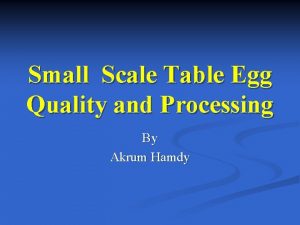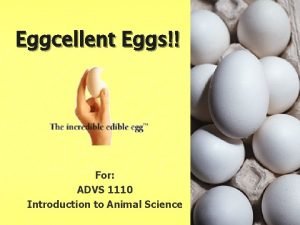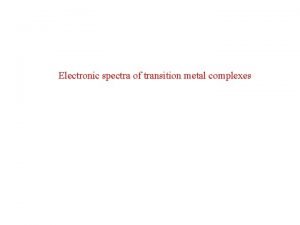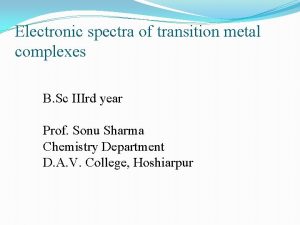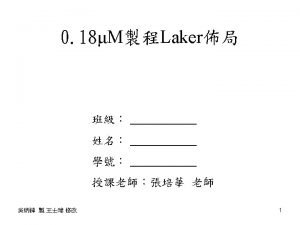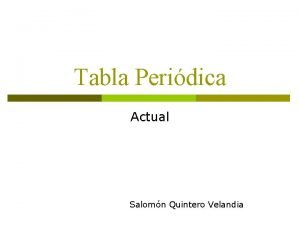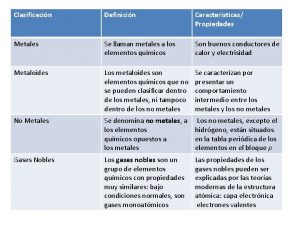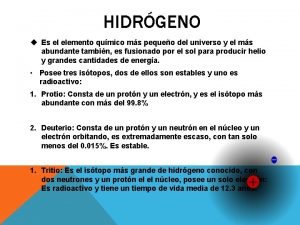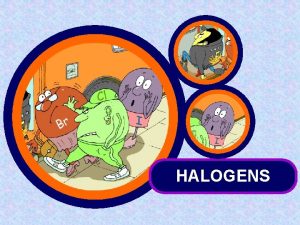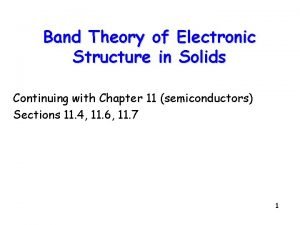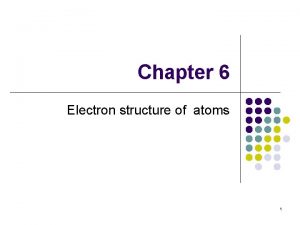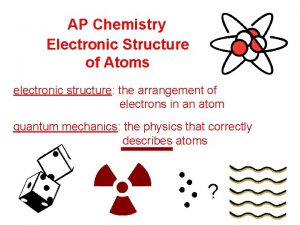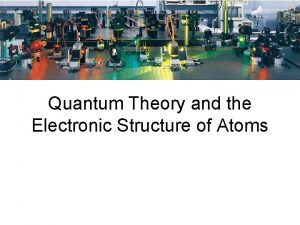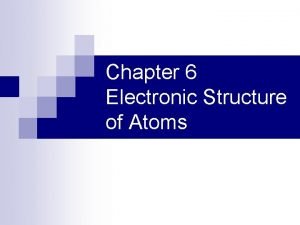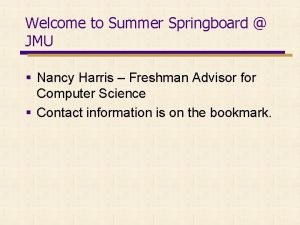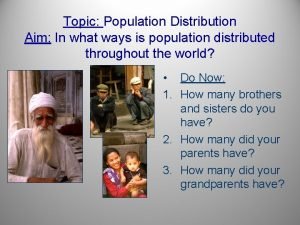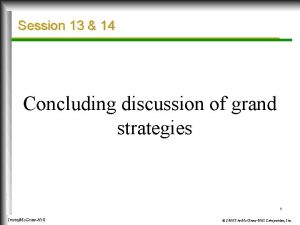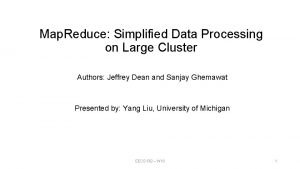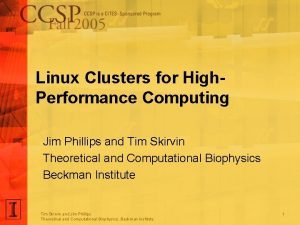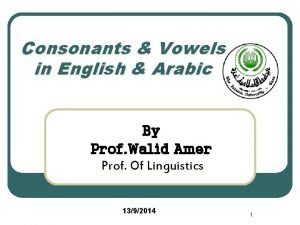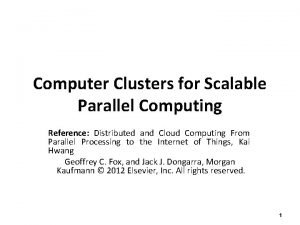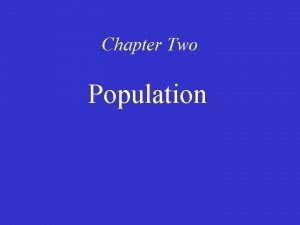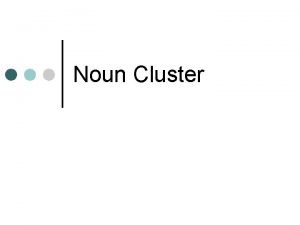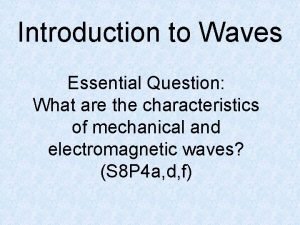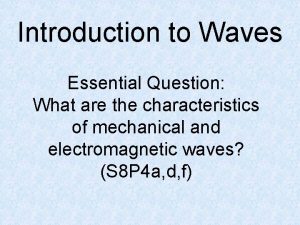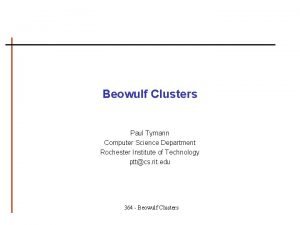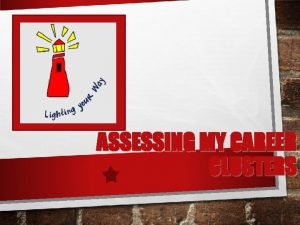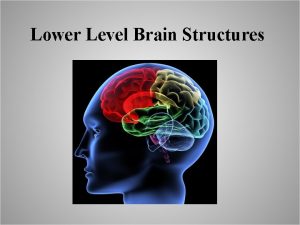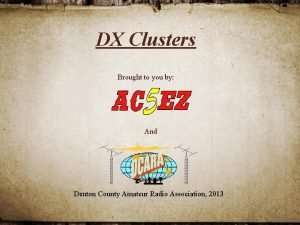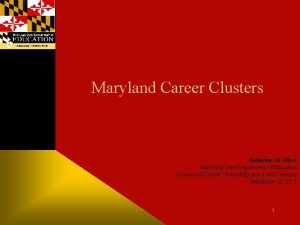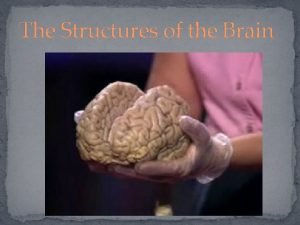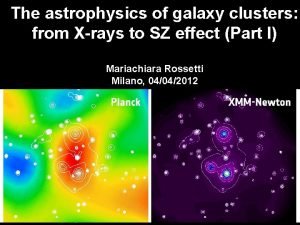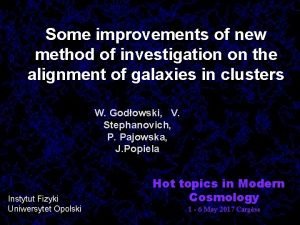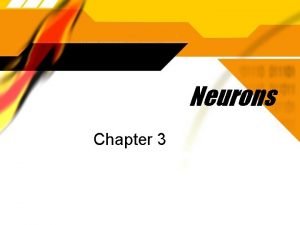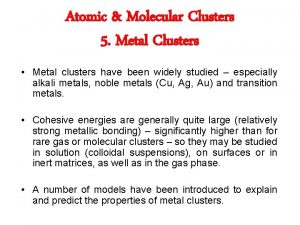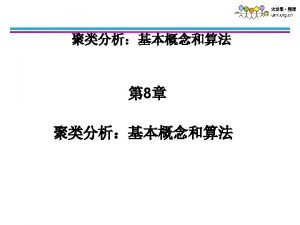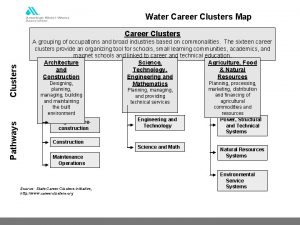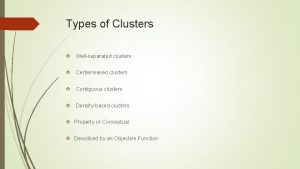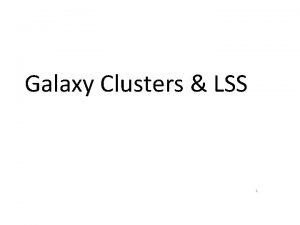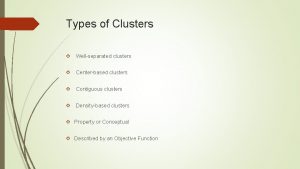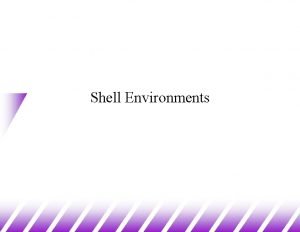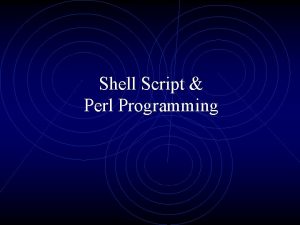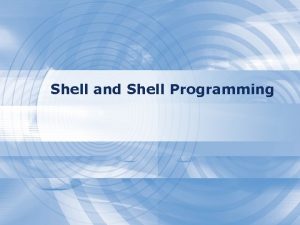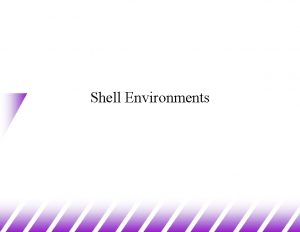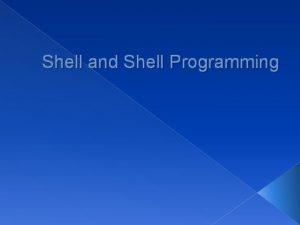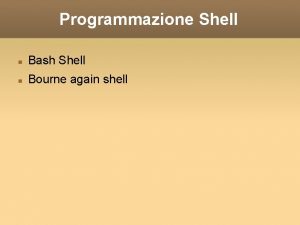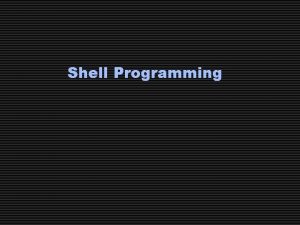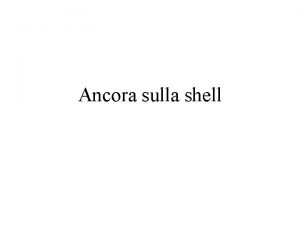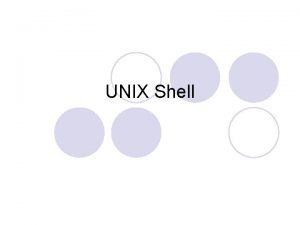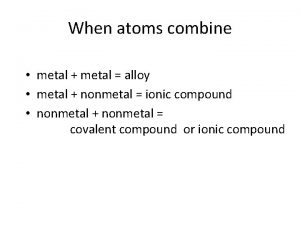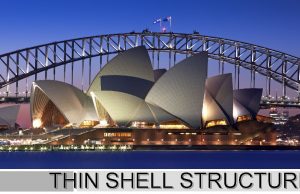Electronic Shell Structure in Metal Clusters Walt de





















![Shell structure versus the Jellium model Shell Structure The property of [metal clusters] that Shell structure versus the Jellium model Shell Structure The property of [metal clusters] that](https://slidetodoc.com/presentation_image_h/9c12cb3ac35635dd9d5e3626c6b05100/image-22.jpg)












































- Slides: 66

Electronic Shell Structure in Metal Clusters Walt de Heer

The pre-shell structure years


1970’s Sodium clusters are molecules

Great idea: Clusters are molecules that can be calculated using density functional theory

Mass spectra mean something Magic numbers: stability and structure

Spherical jellium droplets: does it mean anything?


Spherical jellium is an interesting idea!

Spherical metal droplets is a bad idea!

Knight’s idea: molecular beam resonance experiments on very small clusters to explore “quantum size effects”. De Heer Ph. D thesis 1985

For a brief and accurate account of the discovery, see Science News, July 19, 2008 by Walt de Heer, Keith Clemenger, Winston A. Saunders, in response to story in Science News, June 21, 2008

First indication of shells: the spectra evolve shell-by-shell. Increasing carrier gas pressure (increasing cooling) Knight et al PRL 52, 2141 (1984),

Spherical potentials (delocalization) 20 92 8 40 58 “Woods-Saxon” potential(not Jellium) Spherical potentials: produce shells, but discrepancies remain (spherical symmetry). De Heer, Rev. Mod. Phys. 65 1993 611 Knight et al PRL 52, 2141 (1984),

The spherical jellium model Electronic density Jellium (ionic) radius, Rion Screening radius, Rion+ D D Electronic “Spillout” Spherical positive (jellium) background EFermi Levels near Ef spill out beyond the jellium W. Ekardt PRB 29, 1558 (1984) + Electronic structure in a positively charged sphere solved self consistently. + It “builds in” metallicity. -Does not resolve shell discrepancies -Is not exactly “simple” Rion D

Schumacher: Shell structure is right but spherical jellium is not a good model. Upshot: all metal clusters show metal droplet behavior, but the spherical jellium model is a poor starting point.

Deep insight into the physics behind the shell stucture. S. Bjornholm, J. Borggreen Philosophical Magazine B, 1999 , 79, 1321 But is it a Physicists point of view!

That can be summarized as follows: Alkali clusters are like fish in a liquid droplet ions electrons The liquid, not the fish determines the shape of the droplet!

This is what they really look like, by the way…


The great divide: Cluster physics versus cluster chemistry Forest versus trees. The Physicist wants a description of the physical properties from the atoms to the bulk, concentrating on trends. The Chemist wants an accurate description of the chemical properties, concentrating on individual clusters. (Also not the great confusion: Shell structure versus the jellium model)
![Shell structure versus the Jellium model Shell Structure The property of metal clusters that Shell structure versus the Jellium model Shell Structure The property of [metal clusters] that](https://slidetodoc.com/presentation_image_h/9c12cb3ac35635dd9d5e3626c6b05100/image-22.jpg)
Shell structure versus the Jellium model Shell Structure The property of [metal clusters] that [valence electrons] occupy quantum states which are in groups of approximately the same energy, called shells, the number of [valence electrons] in each shell being limited by the Pauli exclusion principle. [nuclei, atoms, metal clusters] [similar nucleons, electrons, valence electrons] Model A model is a simplified description of the complex reality designed to reveal the main workings of a system. Shell structure is a property, not a model!

Atomic Shell Structure Simplest Model: Coulomb potential (Bohr atom) Aufbau with independent electrons. First order corrections: Many-body effects (screening): “Hunds Rules”; Shell closings (Periodic Table): 2, 10, 18, 36, 54, 86

Nuclear Shell Structure 20 8 2 Spin-Orbit Shell closings (Magic Numbers): 2, 8, 20, 28, 50, 82, 126 40 Woods-Saxon First order corrections: Spin-orbit coupling (Goeppert Mayer) Rounded well (Woods-Saxon) Ellipsoidal distortions (eg Nilsson) 70 Harmonic Simplest model: 3 D harmonic potential; Independent nucleons; Magic Numbers: (n+1)(n+2) 2, 8, 20, 40, 70, 112

Shell Structure in Alkali Clusters Simplest model: 3 D isotropic harmonic potential Independent electrons Magic Numbers: (n+1)(n+2) 2, 8, 20, 40, 70, 112) First order corrections: Rounded ellipsoidal well (Nilsson-Clemenger) Major Shell closings: (2, 8, 20, 40, 58, 92) Sub Shell closings: 10, 14, 18, 26, 30, 34, 50, …

Nilsson Hamiltonian (spheroidal model) Harmonic oscillator potential Anharmonic correction p, q single-electron momentum and position l: angular momentum U: anharmonic amplitude n: shell index

Anharmonic spheres

Anharmonic spheres with spheroidal distortions

Spheroidal electron droplet model Cluster shapes are determined by the electronic structure 18 14 26 30 34 50 54 Clemenger, PRB 32 1359 (1985) + Simplified description that reveals the main workings + Resolves shell edge discrepancies of spherical models.

3 D harmonic oscillator model with ellipsoidal distortions (easy to calculate) Rz Ry Rx Single particle energies

Total energies


Total energy surfaces


Early measurements of metallic properties of clusters Polarizabilities (screening) W. A. de Heer, Rev. Mod. Phys. 65 611, (1993) Ionization potentials (Fermi level, screening )

Plasma resonances (electron-drop dominated shapes) Collective electron oscillations: (Very intense; almost exhaust the oscillator strength). (multiple peaks reflect non-spherical shapes)

Frank Condon overlap for plasmon excitations using 3 D harm. Osc. model

Direct demonstration of electronic shell structure

Frank Condon overlap for photoelectron spectra 3 D harm. Osc. model

Shell structure is ubiquitous! Shell structure in non-simple metals: Indium

Shell structure in non-simple metals: SIMS of zinc and cadmium

Shell structure in non-simple metals: SIMS of the noble metals

Transition to electronic shell structure: Hg. N, N>30

More, bigger and better: the TP machine.



Ionization potentials of large Na clusters

Shell structure around a hole: Alkali coated C 60 M. Springborg, S. Satpathy. N. Malinowski, U. Zimmerman, T. P. Martin

More, bigger and better.

Another way to look at it: semi-classical orbits

Shells of shells: Supershell structure

Hitting the limits Transition from electronic shell structure to geometric shell structure

Geometric shell structure: shells of atoms

Al transitions to jellium but it does not exhibit electronic shell structure.

Shell structure limitations: evolution of s-p hybridization in Al

Al is the quintessential jellium metal in the bulk. But what about clusters?


The End




abstract Na 7, Na 19, Na 38




The Chemists point of view
 Firmness of the yolk and freedom from yolk defects
Firmness of the yolk and freedom from yolk defects Germinal disc in egg
Germinal disc in egg Is the electronic exchange of money or scrip
Is the electronic exchange of money or scrip Electronic field production
Electronic field production Nephelauxetic effect
Nephelauxetic effect What is the mulliken symbols for f spectroscopic term in
What is the mulliken symbols for f spectroscopic term in Venn diagram about solid liquid and gas
Venn diagram about solid liquid and gas Metal vs non metal
Metal vs non metal Acidity trends periodic table
Acidity trends periodic table Compare the properties of metals and nonmetals
Compare the properties of metals and nonmetals Deep n well
Deep n well Use of nonmetals
Use of nonmetals Liquid elements at room temperature
Liquid elements at room temperature When a metal reacts with a nonmetal the metal will
When a metal reacts with a nonmetal the metal will Metal no metal y metaloide tabla periodica
Metal no metal y metaloide tabla periodica Dr terry blanch
Dr terry blanch Metales no metales y metaloides
Metales no metales y metaloides Is sodium more reactive than potassium
Is sodium more reactive than potassium Hidrgeno
Hidrgeno Reactivity of halogen down the group
Reactivity of halogen down the group Pn junction band diagram
Pn junction band diagram Chapter 6 electronic structure of atoms answers
Chapter 6 electronic structure of atoms answers Ap chemistry electronic structure of atoms
Ap chemistry electronic structure of atoms Quantum theory and the electronic structure of atoms
Quantum theory and the electronic structure of atoms Chapter 6 electronic structure of atoms
Chapter 6 electronic structure of atoms Enrichment clusters
Enrichment clusters Jmu cluster 3
Jmu cluster 3 Career clusters framework
Career clusters framework Population distribution
Population distribution Gram positive grape like clusters
Gram positive grape like clusters Model of grand strategy clusters
Model of grand strategy clusters Obsessive compulsive personality disorder symptoms
Obsessive compulsive personality disorder symptoms Sanjay ghemawat
Sanjay ghemawat High performance computing cluster linux
High performance computing cluster linux Marking bad clusters data hiding technique
Marking bad clusters data hiding technique Chapter 16 driving on highways
Chapter 16 driving on highways Difference between a vowel and a consonant
Difference between a vowel and a consonant Design objectives of computer clusters
Design objectives of computer clusters Projection ap human geography
Projection ap human geography Career cluster definition
Career cluster definition Danielson clusters
Danielson clusters Fcs launchpad
Fcs launchpad Maximal onset principle
Maximal onset principle What career cluster is a chef in
What career cluster is a chef in Noun cluster adalah
Noun cluster adalah Waves graphic organizer
Waves graphic organizer Types of waves quad clusters answer key
Types of waves quad clusters answer key Virtualization of clusters in cloud computing
Virtualization of clusters in cloud computing Mtcis
Mtcis Career clusters framework
Career clusters framework Rit cs clusters
Rit cs clusters Mcis career cluster inventory
Mcis career cluster inventory Why are career clusters important
Why are career clusters important Career cluster wheel
Career cluster wheel Lower brain level
Lower brain level Empty space between traffic clusters
Empty space between traffic clusters Georgia career clusters
Georgia career clusters F5len web cluster
F5len web cluster Career exploration vocabulary
Career exploration vocabulary Maryland career clusters
Maryland career clusters Cluster c
Cluster c Onet career clusters
Onet career clusters Two almond shaped neural clusters
Two almond shaped neural clusters Mn career clusters
Mn career clusters Galaxy clusters
Galaxy clusters Galaxy clusters
Galaxy clusters Two almond shaped neural clusters
Two almond shaped neural clusters
